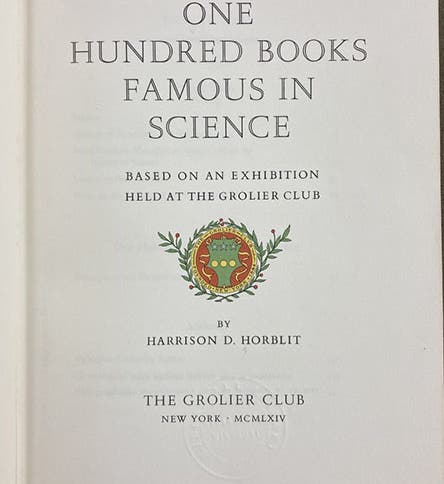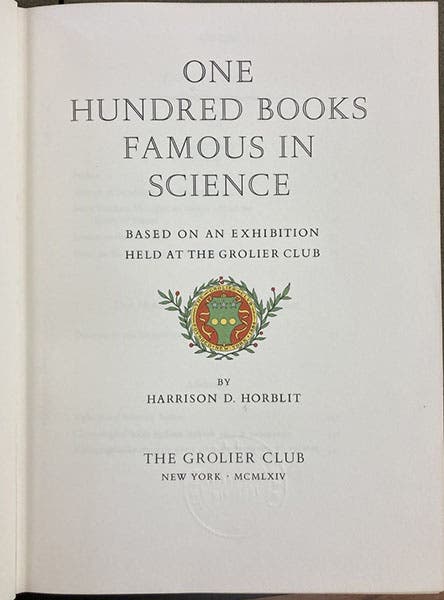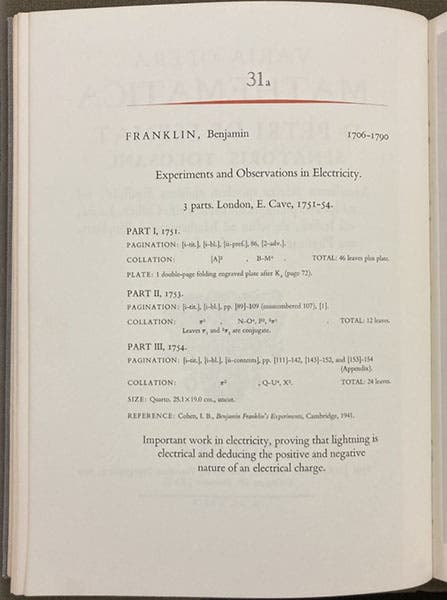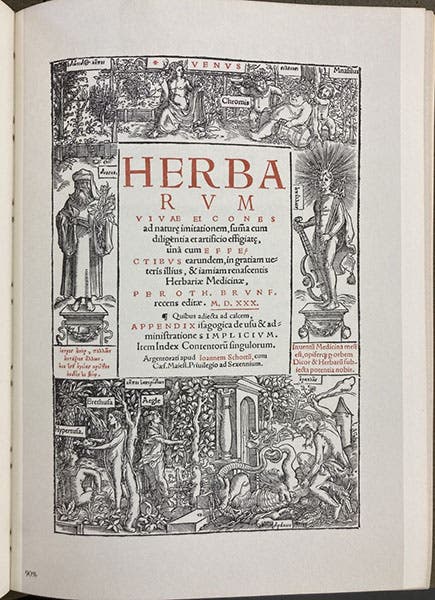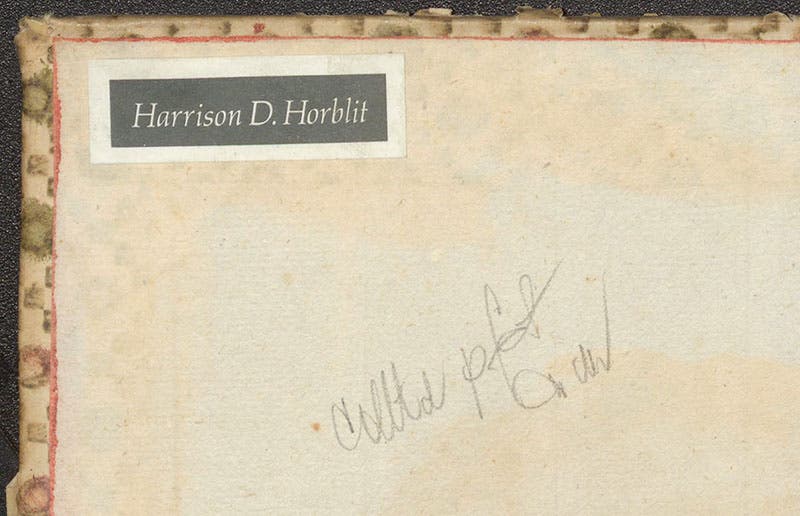Scientist of the Day - Harrison Horblit
Harrison D. Horblit, a businessman and collector, was born May 1, 1912. Horblit became the owner of a textile company in New York and must have done quite well financially, for he collected things voraciously, mostly early photographs, and important books in the history of science. In 1958, he organized an exhibition at the Grolier Club in New York City, a catalog of which was published in 1964 under the title: One Hundred Books Famous in Science. The exhibition included such books as Isaac Newton's Principia (1687), Charles Darwin's Origin of Species (1859), and Albert Einstein's papers on special and general relativity (1905 and 1916). Actually, there were 135 works on exhibit, because many of the exhibited items were actually two items: Newton's paper on light and his book, Opticks, comprised one entry, as did Schleiden's and Schwann's works on cell theory. So if you have 100 of the Horblit 100, you are about three-quarters of the way to your goal.
The book published by the Grolier Club, 6 years after the exhibition, is a splendid publication, typeset by the Stinehour Press and printed by the Meriden Gravure Company on special rag paper. As an object, the book is magnificent; as a reference work, it has many shortcomings, in my opinion – the books on display were provided by various libraries, dealers, and collectors, and they are not identified in any way in the publication. There are many images in the book of title-pages and plates, but you have no idea whose copy you are looking at. I do not know who made the actual choices of titles – the book does not say – but there are a few books that have no business being included in a top 100 list (item 76, Johannes Peter Müller’s Ueber die phantastischen Gesichtserscheinungen, 1828, jumps out from the list, as does item 13, Giovanni Borelli's De motu animalium, 1680-81). And there are some serious omissions. There are no works on quantum theory except the first (Max Planck's paper of 1900), and René Descartes’ Principia Philosophiae (1644) , the most important and influential work on the subject before Newton, is not there either. One can always disagree about top 10 or top 100 lists, but that doesn't mean that criticisms are invalid.
That said, at least 120 of the choices are right on target, which is a very high average. Because of that, One Hundred Books Famous in Science marked the splashy debut of history of science as a valid collecting field. Many later collectors used Horblit as an acquisition guide – the number of books from the Horblit 100 one owned became a measuring stick of one's success as a collector in the history of science. Libraries should not really play this game, but we do. Some years ago, I checked our holdings against the Horblit catalog, and found that we have 96 of the 135 items in our collection, most in the same editions as those displayed but a few in later issues. Of those we are missing, 13 are out of scope, being medical, leaving us with 26 left to acquire. That is an excellent percentage.
However, while a collector might measure his or her success by a Horblit percentage, a research library should not. We could have all 135 Horblit items, and if that is all we had, we would be useless as a research library. A researcher can find a Newton Principia or a Copernicus De revolutionibus just about anywhere. But if you want to study Newtonian physics or Copernican astronomy, what you really need are the hundreds of books and articles published by predecessors and followers, critics and supporters, that allow you to pursue, say, the reception of Newtonianism, or the reasons why Copernicus proposed his new system of astronomy in the first place. None of these ancillary books would ever make anyone's top 100 list, but without them, you could never hope to understand what went on in those crucial periods.
So we are happy to have the two books by Johannes Kepler that are included in Horblit's One Hundred. But we are even more pleased to have in our collections 24 other books by Kepler, printed during his lifetime, on such subjects as the date of the birth of Christ and the capacity of wine barrels, and scores of contemporary books by critics and rivals of Kepler, and by his early defenders. We also have edited sets of Kepler's Opera or Werke, and a variety of translations. So if you want to study Kepler's Astronomia nova (Horblit 57), you would have available, in our history of science collection, all the necessary collateral works you might need, and not one of them is mentioned in Horblit.
As a person, Harrison Horblit is very elusive, at least online. We don’t even have a portrait available. Most of his collected books, and all of his 7000 early photographs, were donated to the Houghton Library at Harvard. Some of his books went back on the market and became available to other collectors. We have 7 items with the modest Harrison D. Horblit bookplate on the inside front cover (sixth image). One is the 1566 edition of the Conicorum of Apollonius, which was possibly the copy on display in 1958 at the Grolier Club, Horblit 4. The bookplate we show you is from this work.
William B. Ashworth, Jr., Consultant for the History of Science, Linda Hall Library and Associate Professor emeritus, Department of History, University of Missouri-Kansas City. Comments or corrections are welcome; please direct to ashworthw@umkc.edu.

